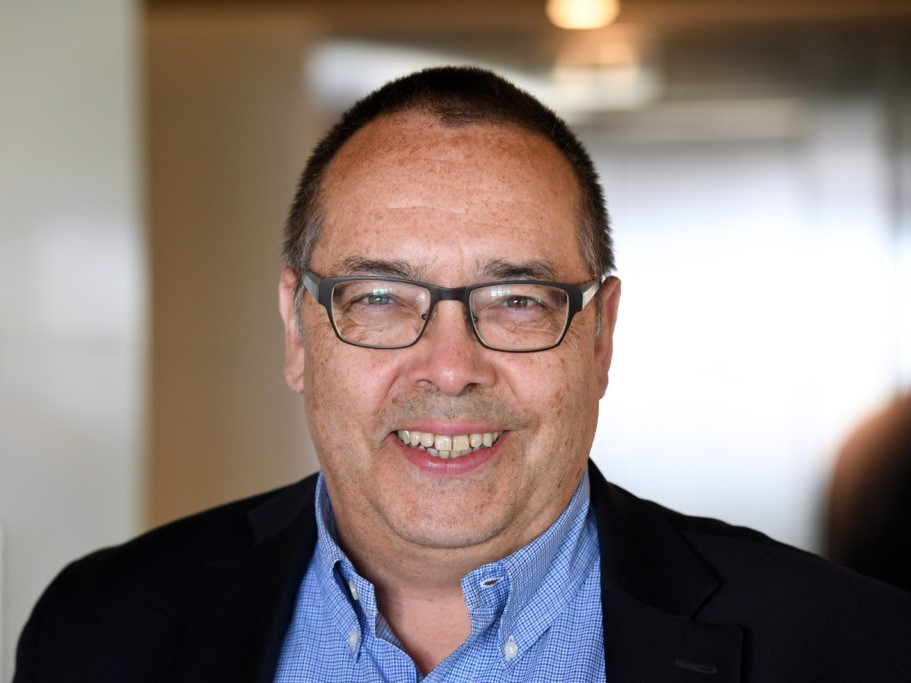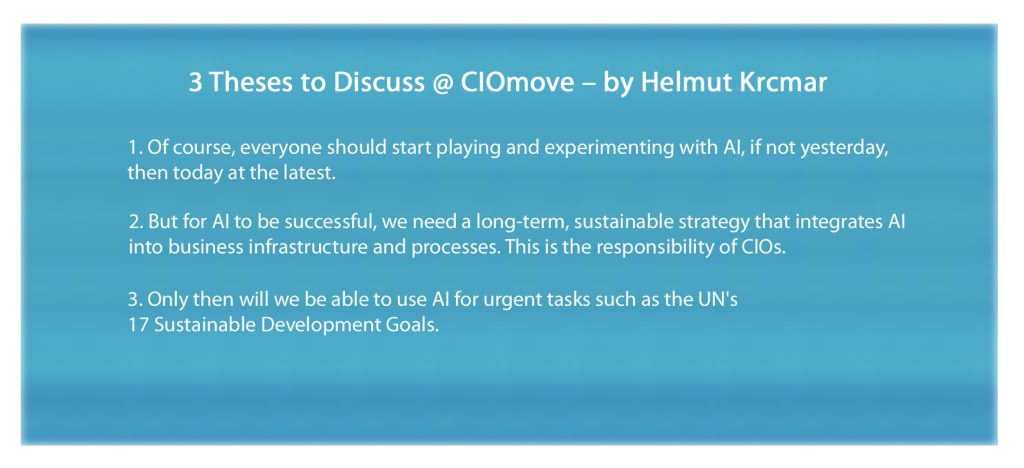
Artificial intelligence, and with it the providers of such technologies, if not all modern technologies, are setting a pace that rivals that of the ancient galleys, which were supposed to motivate the rowing slaves to, well, even more speed.

Those who don’t get on board now, at the time of the hype, are said to be missing out on the trend, and the time missed cannot simply be made up for because others will use the time to gain experience, make mistakes and learn best practices. They could then, in just a few months, be unassailably ahead.
So of course companies should start using AI, if not yesterday, then today at the latest, says Helmut Krcmar, one of the inventors of CIOmove. There is no shortcut for dealing with artificial intelligence, so everyone has to go down this path, with all the detours and dead ends that come along the way.
Nevertheless, in his recent keynote at the Hamburg IT Strategy Days, Helmut argued for a different approach to AI: “From simply fast to long-term and sustainable” is more than just a catchy title. However, in an interview with CIOmove, Helmut wondered if it wouldn’t have been better to say “sustainable long-term”.
Either way, the two key words are in the title: “sustainable” and “long-term”. Helmut Krcmar is using them in a double sense: on the one hand, he is calling for work on and with AI to be aligned with the demands that climate change and supply chain issues place on us in terms of sustainable business, as set out in the United Nations’ 17 sustainability goals. These relate to environmental, social and governance (ESG) efforts, and it makes perfect sense to include technical promises such as GenAI in the work on these core areas.
AI lends itself to this because, as Helmut Krcmar says, it is a “general purpose technology” that has what it takes to change everything, everywhere and everywhere. And unlike many other hypes (perhaps including the much-vaunted Metaverse), Helmut does not believe that AI will disappear in three years’ time. “It’s here to stay!”
“Sustainable in the long term”, and that is the second meaning of his lecture title, must therefore also be the focus of AI. Incidentally, to avoid any misunderstandings, this explicitly includes short-term, spontaneous, playful or experimental engagement with the technology. Because all of this is the prerequisite for being able to use and develop AI with a long-term sustainable perspective.
It is the responsibility of CIOs to provide a proper, modular, and secure infrastructure in which employees can take their first steps without worrying about the functionality of their company. They also have a role to play in empowering their own business colleagues to break new ground and become AI explorers. It is up to IT to decide what technologies and environments are available and what boundaries need to be respected.
The CIO’s job is to create, evolve, and make the technology infrastructure resilient. They are responsible for scaling and IT security, so the good news is that they will continue to have “an insane amount to do,” as Helmut Krcmar puts it, “but not in the classic plan-build-run sense,” but rather in creating the right environments for employees to experiment.
Is he knocking on the doors of CIOs who have long been aware of this? “Maybe,” says Helmut, adding: “But sometimes it helps to mention that there is a door that leads to the next room, and that door could close.”
